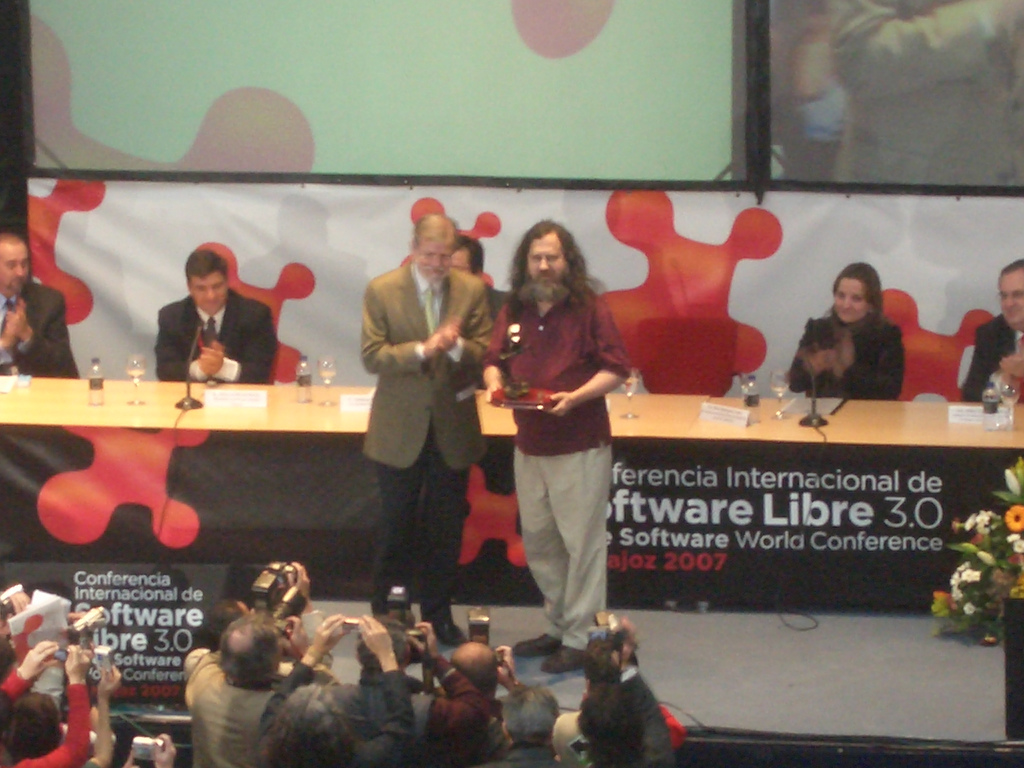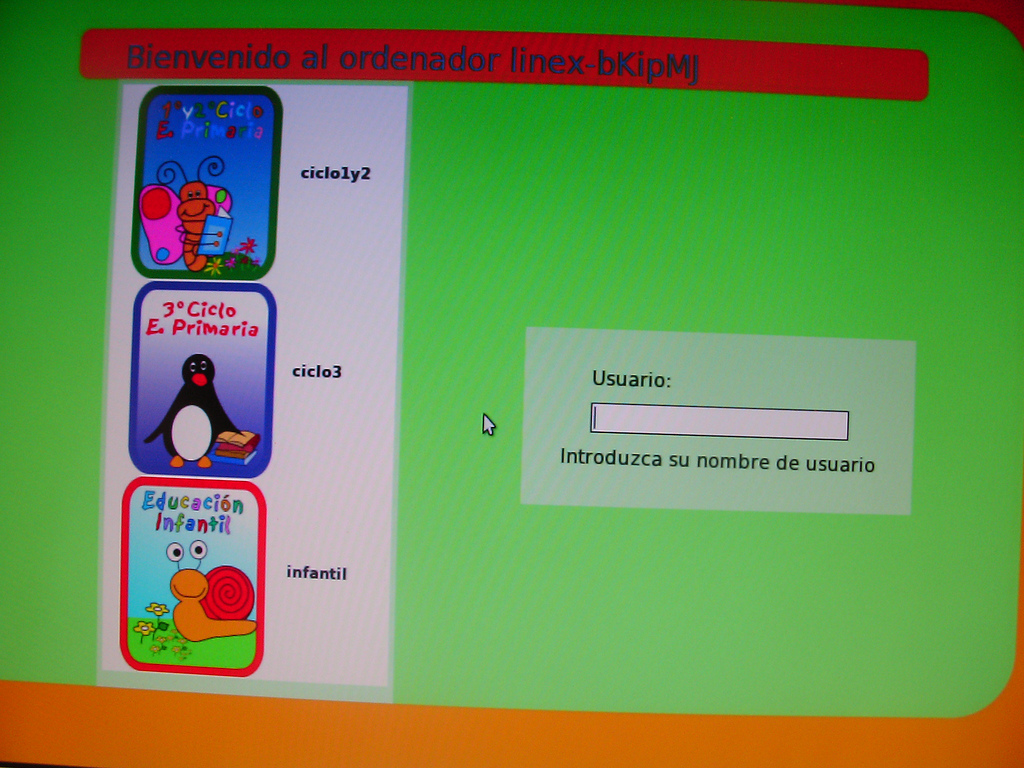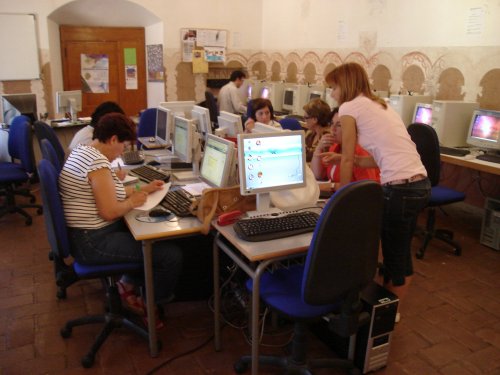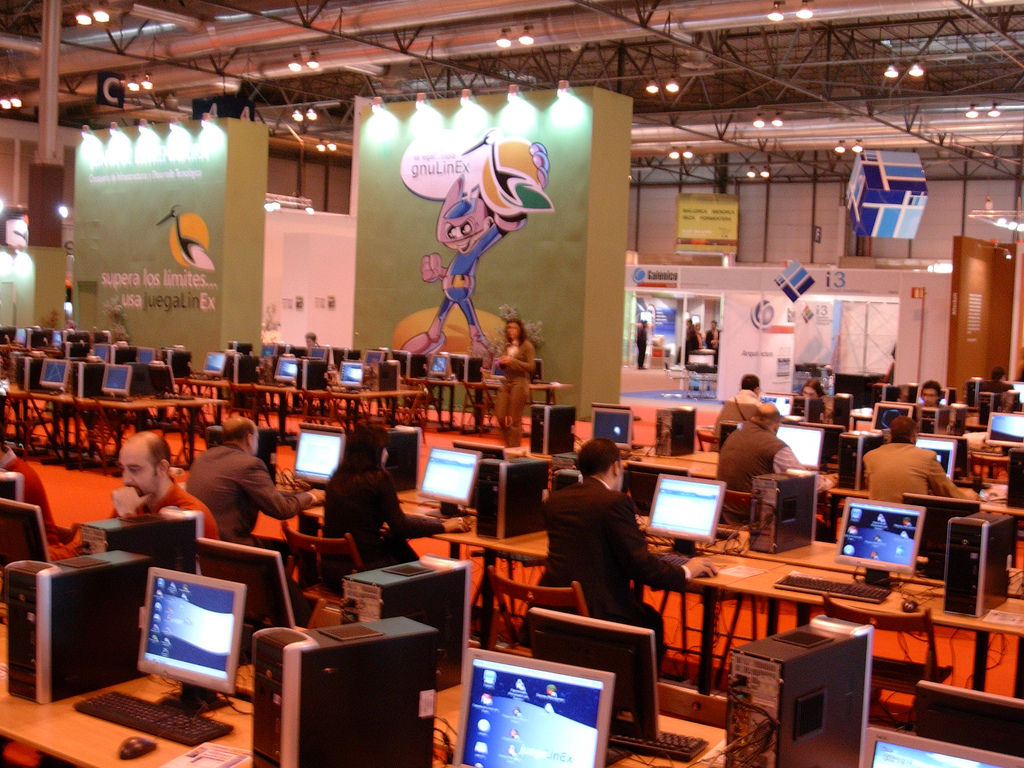I previously posted about governments around the world using Linux, doing research on such topic was really insightful. But one example stood out more than any other, and that’s no other than the Spanish region of Extremadura. Extremadura’s migration to Linux is quite remarkable, especially that it is fully backed up by the local government. The whole case really intrigued me, so I decided to explore more about this region’s Linux escapades. I sat down with a lead developer of the project Daniel Campos, and had the following discussion:
Linuxologist: Daniel, thank you for taking the time from your busy schedule to sit with me. Let’s start talking about you, what is it exactly that you do?

DC: Well, of course I have my Extremadura/LinEx responsibilities. I’m part of the LinEx technical team, we are 6 people creating and maintaining a Debian based distribution. This distribution is used in the education system in Extremadura, and it is also used to spread free software concepts to people here. I’m both programmer and package maintainer for this distribution. I am also a project manager for LinEx SP (a special version of LinEx used internally in Extremadura’s Public Administration) and LinEx GUIA (a special distribution for Extremadura’s councils).
On a broader level, I am part of Gambas project acting as a programmer and also in charge of the Futura project [pdf] (outdated) which is a new project aiming to improve GNU/LinuxGUI.
I also occasionally take part in training, free software consulting, and collaborating in free software conferences and presentations.
My god! Now I understand why I have little time to spare! !:-)
Linuxologist: Can you tell us more about the Extremadura region? What is it that makes your region special in terms of what you are doing?
DC: It’s a beautiful place, really a great place to live in. However, Extremadura has a big problem: its population density is very low, with 1 million people spread over 40,000 km2, most living in provincial villages scattered around the region. In reality, Extremadura has only three “big” towns, Mérida, Badajoz and Cáceres. This demographic structure had severe consequences on development of the telecommunications and IT sectors. Private companies don’t see Extremadura as a lucrative market, it would require a big initial investment since the region is huge (larger than Belgium), providing little or no profitability due to the low population.
We realized that we had to act quickly or we would miss the boat. Access to information is most imperative, just like missing the industrial revolution doomed many countries to be “developing” for a good chunk of their history. So, the government said: if the private sector is not interested in developing a telecommunications network for us, we will do it ourselves!
However, Extremadura is one of the poorest regions in the EU, and the cost of proprietary software needed to run the network was just too much for us to bear. So the government decided to use free software; in the beginning due to its low cost, but soon they realized that free software is a powerful tool to provide “technological independence” and avoid reliance on global conglomerates and monopolies.
** Linuxologist: Before the **LinEx project, what was the IT environment like in the region?
DC: Extremadura’s economy depended mainly on agriculture and farming. There were very few industrial companies, and yet fewer interested in newer technologies. However, there was a small group of investors interested in information technology as a business, and soon started to invest in it. IT startups appeared, related to hardware, software, support, distributed software, telecommunications…etc. We certainly aren’t industry leaders, but there’s no doubt that the situation is much better now.
** Linuxologist: How was the idea of LinEx conceived? What was the driving force behind it?**
DC: The idea was to start using LinEx as a tool for the educational system. Why? Well, there’s no critical data in such an environment. Free software was a new and unknown technology here, so the managers didn’t want to risk critical systems. Educational needs are homogeneous in a sense that all systems need a common set of tools. In contrast, administrative systems may need to be customized for each computer. So in a sense, the project was a low-risk testing ground that has a minimal set of needs to be covered. Thanks to the LinEx project, we were the first region in Spain offering a computer for every two students, in both the primary and secondary education systems.
With this, the idea of technological independence seemed feasible. With such an infrastructure we were able to develop and customize code to suit public administration offices. We started deploying LinEx in government offices starting with “Project Jara” aiming to migrate all Health System computers to LinEx. Other government offices soon followed.
Linuxologist: Seven years have passed since the inception of the project. Are you satisfied with the progress that has been made? Are you now where you expected to be? Looking back, how has the response been from users and decision makers? What would you have done differently?
DC: I meet a lot of people who aren’t able to understand why the project hasn’t reached 100% adoption, despite starting in 2001. But they seem to overlook one fact; at the end of the day users and managers are human beings, so there will be resistance, it’s expected. People just don’t like being pushed out of the their comfort zone. The trick is to convince people of all the advantages the free software model offers, and throw in support so they can understand their systems. In reality we have “allies” and “enemies” in any public administration office. It would be a dream to have everybody singing in tune, but that’s not really realistic. No matter what school of software you subscribe to (proprietary or free) you will always find resistance, one just needs to provide better solutions and hope that they accept the new model.
Of course, there will always be things you wish you have done differently. But Extremadura itself was a huge experiment with no prior experience whatsoever; sometimes trial and error is the only way to go. Back then, having a good office suite or a decent web browser was only a distant dream. Things have developed a lot in the free software world, not only in Extremadura.

Former Extremadura president and Richard Stallman
Linuxologist: As I understand, education is one of the pillars of the project. What is the reach of LinEx in the educational sector and how are kids being exposed to your product?
DC: In the past computers in schools were used for educational purposes in such a way that the teacher would be guiding the children through it. With the information age all that changed. Computers have become an essential part in any education system, because of the sheer amount of information they bring to the children’s fingertips. Teachers are no longer in the driving seat. Currently, Extremadura has 80,000 computers in schools, or as I said earlier a 2:1 ratio. We are planning to have a computer for every child in the near future.
Linuxologist: One of the key selling points of free software is the freedom to adapt it locally. To what extent is the software you deliver modified from upstream? Have you found it necessary to develop many new applications yourselves or was it sufficient to use existing programs?
DC: It depends. Some programs like Firefox or OpenOffice.org were sufficient and needed no modification. However, the desktop environment needed some modifications to fit our needs: we modified the installer (originally Anaconda, now the Debian Installer) for our system, we adapted the default language and from time to time we revise the Spanish translation. We created an simpler control panel, we created a tool to install software from a web browser using the apt:// protocol (yes, Ubuntu always take credit for that which isn’t right, we did it a year before, but people seem to love Ubuntu more :-)) , we have specific tools to manage the system in a classroom (ControlAula), tools to manage LDAP services, and things like that.
LinEx is based on Debian, but sometimes we need to update it: for example LinEx 2006 was based on Debian Sarge, but we added OpenOffice.org, GNOME 2.14 (with some parts of GNOME 2.16 and GNOME 2.18 ), we added Xorg 7.1 and 7.3, we updated XFCE, we also upgraded the kernel… In some cases we have newer software than Ubuntu. We remain compatible with Debian Sarge, so anyone can just add our repositories and use our products.
A big slice of our work is upgrading software. Software like CUPS and Xorg as well as the kernel and device drivers needs to be frequently upgraded to support as much hardware as possible. Our install base is about 90,000 computers, and there is always new hardware pouring in to replace the old, so we have a lot of devices to support. Nowadays the hardware market provides new devices every 6 months.
Aside from this, some specific projects like LinEx GUIA for councils were designed to provide the simplest human interface possible, and that meant we had to change many things. We developed a new simplified desktop called “GUIA Desktop” written in Gambas, we took GNOME applications and removed all the advanced options, we added easier
support for removable devices and some other magic.
Linuxologist: What sort of educational applications come with LinEx?
DC: The Debian-EDU repository provides software in many categories: language, design, geography, kids, music, chemistry, physics, astronomy…
Some applications were taken from Debian, some from the KdeEdu project, some were created for LinEx… all sorts of applications youcan imagine.
Apart from that we created tools to manage classrooms, such as an LDAP based system, and we are currently using tools like Puppet to simplify administration.
The next step is the LinEx integration with SkoleLinux, the Debian-EDU project, collaborating with Norway, France, Germany and other countries to provide a common free software base for all the educational systems.
 GDM for kiddies!!
GDM for kiddies!!
Linuxologist: It has often been argued that Microsoft Windows is “easy to use” just because most people first learned computing on a Microsoft OS. Therefore, if Linux came first, Windows would’ve seemed hard. Could you say that about the kids who are getting exposed to Linux as their first environment?**
DC: It’s not only children, we have a project called NCC which focuses on providing access to new technologies and networking to everybody. A lot of old people here had their first encounter with a computer thanks to this project. Now they find Windows(R) more difficult than LinEx. The same could be said for children.
There’s a project that aims to provide public access computers in all public libraries, obviously these computers run LinEx, OpenOffice.org and Firefox. People use the public terminals with no problems, they can easily look up information, they surf the net, they write documents without a hitch. They are as productive as with any other OS. There is no traumatic transition, they just click the icons and run! Any Microsoft manager speaking about the difficulties of using GNU/Linux for the “desktop/average user” is just lying or doesn’t really know what he is talking about. Please, tell them to use better arguments.
 ]
]
The NCC program in action!
Linuxologist: Other than the education sector, where else is LinEx used? Has there been any adoption in the private sector?
DC: Usually, there is a bit of a misunderstanding on this point: LinEx is a project designed to benefit from free software in the Extremadura Public Administration environment. We are not a company offering services to the private sector, we’re not really a distro in the strict sense either; we just customized Debian to suit our needs. But, of course, anybody can download and install our “distro”.
So if a private company wants GNU/Linux software and support, they have a lot of different options, some in Spain some international, catering to the private sector is not our goal. Ubuntu, Red Hat or SUSE are commonly used in the enterprise world, but notLinEx, as we are focused on other tasks.
We use free software, we use our distro, we use it to spread free software in the population, we provide help to the Debian community, we fund some free software projects and improvements, but we are not in the private market at all. Still, our software and activities we promote benefit private companies, our activities create new companies and opportunities, that’s all.
Linuxologist: LinEx runs on GNOME, why GNOME as opposed to for example KDE?
DC: It is quite important to select a set of standards to use when you plan to install software on 90,000 computers. You need a common base. In the beginning we found GNOME easier to use and adapt to our needs, that’s all. Our users have already grown accustomed to GNOME, so there isn’t really any reason to change that either.
The general population using LinEx have KDE and XFCE packages available, and in general any alternative software available for Debian. So users can choose any piece of software they might need. But inside a big corporation everything must be standardized, and our standards include GNOME for historical reasons. Otherwise it would impossible to maintain.
Linuxologist: Have any other governments or public authorities (in Spain or abroad) contacted Extremadura to draw from your experience with free software?
DC: Of course! Andalucia started a few years after us, they have a project with similar goals called Guadalinex, initially based onLinEx. Castilla-La Mancha runs the Molinux project. Catalonia is also interested and contacted us to explore the possibilities of using free software.
We also participated in some international projects, like in Colombia and Brazil. Other countries like Vietnam, Italy, Greece, and Portugal also contacted us to collaborate on different projects. We also have a governmental office dedicated to answering inquiries about free software.

A Linux conference in Spain
Linuxologist: What is your roadmaplooking ahead? Is there anything in particular you are especially excited about?
DC: We’re involved in a big project focused on improving the human interface for GNU/Linux systems. And we’re trying to provide the software stack for any platform, including mobile devices like phones and PDA’s. This platform will be standardized, with implementations available for any OS.
This way any piece of software could run on any device without spending more money on creating a “mobile” version, a “laptop” version and so on. We’re creating a Desktop completely based on standards: XBL, SVG, HTML, Ecma JavaScript, so we’ll be able to reduce human interface design time, reduce maintenance, and we’ll be able to create an abstract interface so it could be adapted not only on different screens but on other devices, like voice devices, so handicapped people would be able to access any program without any modifications to the code.
It will take a time, but stay tuned, you’ll know more about it in a year, more or less. We need some time designing and programming before we can officially release it.
Linuxologist: Great, can’t wait! Thank you for your time! Any predictions about the future?
DC: The future is not GNU/Linux on computers, nobody will care about computers in a few years. The future is GNU/Linux on gadgets!